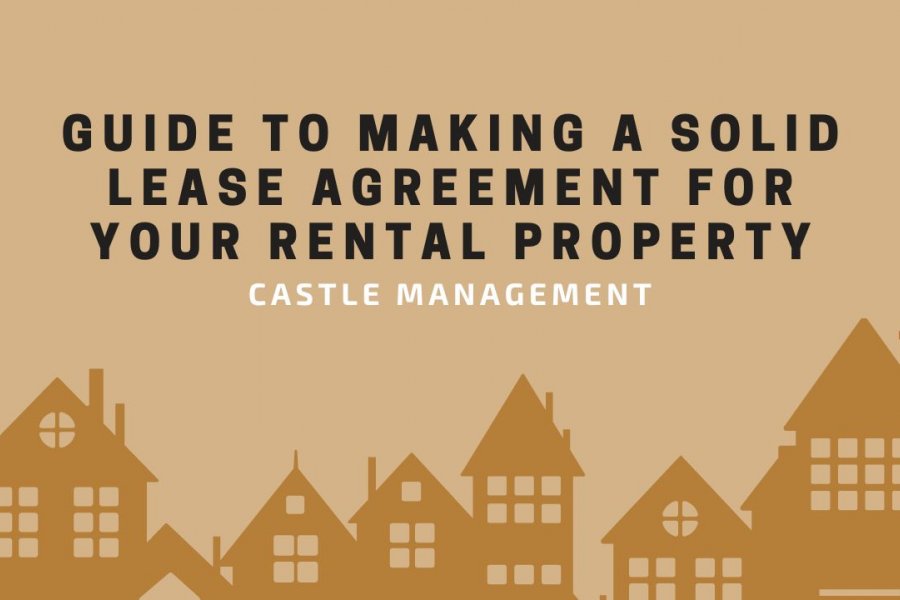
Leasing multi-family properties is a complex process that requires careful consideration of legal, financial, and logistical aspects. One of the most crucial components of this process is creating a solid lease agreement.
A well-crafted lease agreement not only protects the rights and interests of both landlords and tenants but also sets clear expectations for a harmonious living arrangement.
In this guide, we will delve into the key elements of an effective lease agreement for multi-family properties, focusing on creating a document that fosters a positive landlord-tenant relationship.
Clear Identification of Parties
The lease agreement should start by clearly identifying the parties involved: the landlord and the tenants.
Include legal names, addresses, and contact information for both parties. This ensures that all parties understand who is involved in the lease agreement and how to reach them.
Property Description
Provide a detailed description of the multi-family property being leased. Include the property's address, unit number (if applicable), and any specific features that are included with the unit. This prevents any confusion about which unit is being leased and what amenities are provided.
Lease Term and Rent
Clearly specify the lease term, whether it's a month-to-month agreement or a fixed-term lease. Outline the rent amount, due date, and acceptable payment methods.
.jpg)
It's important to also mention any late fees or penalties for missed payments. Make sure to outline any changes to the rent structure during the lease term, such as annual increases.
Security Deposit and Other Fees
Detail the security deposit amount, the conditions for its refund, and any deductions that may be made. Additionally, if there are any non-refundable fees such as pet deposits or cleaning fees, clearly explain their purpose and amount.
Use of Property
Outline the permitted uses of the rented unit. Specify whether it's for residential purposes only and any restrictions on subletting or unauthorized occupants. This section helps maintain the integrity of the property and ensures that tenants understand their responsibilities.
Maintenance and Repairs
Clearly define the responsibilities of both the landlord and the tenants when it comes to property maintenance, repairs, and any renovations.
Specify which party is responsible for specific repairs, routine maintenance, and emergencies. This will help prevent disputes and ensure the property remains in good condition. You may also want to include a clause on your expectations for the end-of-tenancy cleaning.
Utilities and Services
Clearly outline which utilities are the responsibility of the tenant and which are covered by the landlord. This includes electricity, water, gas, and any other relevant services. Providing this information prevents misunderstandings and helps tenants budget appropriately.
Rules and Regulations
Detail the rules and regulations that tenants must adhere to while living on the property.

This can include noise restrictions, parking regulations, waste disposal guidelines, and other community rules. Make sure to address any consequences for violating these rules.
Entry and Access
Typically, access is required for maintenance and repairs. Clearly outline the notice period that will be given to tenants before entry, except in cases of emergency. This notice period allows tenants to prepare for the visit and make any necessary arrangements.
Emergency situations might require immediate access to the rental unit. Specify what constitutes an emergency and explain that, in these cases, the landlord or property management may enter the unit without prior notice.
Termination and Renewal
Outline the process for terminating the lease agreement, whether it's at the end of the lease term or due to other circumstances like eviction. Clearly state the notice period required from both parties and any penalties for early termination.
If there's an option for lease renewal, provide information on the renewal process and any associated changes in rent or terms.
Dispute Resolution
Even in the most well-crafted lease agreements, disputes can occasionally arise between tenants and landlords. Having a dedicated section on dispute resolution can provide a clear roadmap for addressing conflicts in a fair and efficient manner.

Highlight the benefits of avoiding legal action. Legal battles can be time-consuming, costly, and detrimental to the landlord-tenant relationship. By emphasizing the advantages of resolving disputes amicably, you encourage both parties to find common ground.
Additional Clauses
Depending on the specific property and circumstances, consider including additional clauses that address topics such as smoking policies, maintenance of common areas, and security measures.
Tailoring these clauses to the property's unique characteristics can further protect the interests of all parties involved.
Bottom Line
Crafting a solid lease agreement for multi-family properties, such as those managed by Castle Management, is a critical step in establishing a successful landlord-tenant relationship.
By including comprehensive and transparent provisions that cover key aspects of the rental arrangement, landlords can ensure a smoother experience for both themselves and their tenants. A well-structured lease agreement not only protects the rights of both parties but also lays the foundation for a harmonious and mutually beneficial living arrangement.
